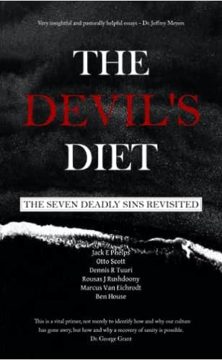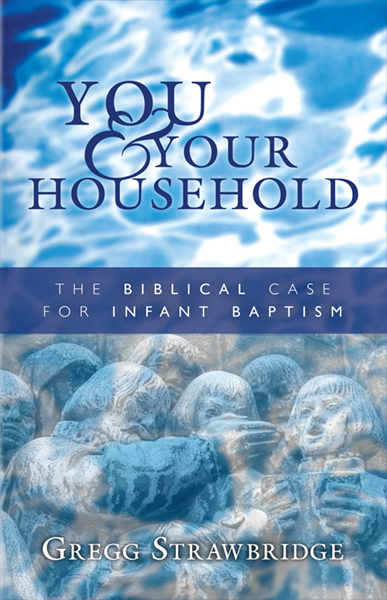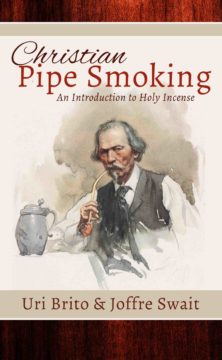Guest Post by Mark Nenadov
“[W]e have as many masters and preachers as there are little birds in the air, that put us to shame with their living example” – Luther’s commentary on the Sermon on the Mount
The Tanager Drops By
I was sick in bed one day when my wife told me about a bird she saw out the window. By the time I came down, it was gone. It soon returned for a split second, and I spied a brief orange-tinged red flash on the drab scenery out the window.
It turns out it was a Summer Tanager, a pretty rare bird over here in Essex, Ontario, Canada. Quite frankly, I’d have been excited if I found this bird at a proven birding hotspot, let alone right here on my property on a busy intersection. My feeder was empty and I didn’t even have to go outside to see the bird. I will not reveal how many prickly thickets I had to walk through to get a glimpse of my first Eastern Towhee, a much less remarkable find, though still a fascinating bird!
Such is the birder’s life. Sometimes you work hard to get skunked, other times they drop in “on a silver plate with watercress around them”, as Wodehouse might have put it.
The Birds Of The Book
I love birds. What fascinating little creatures God hath wrought! And yet, bird watching as an activity is far too often summarily discounted (at best) or ridiculed (at worst).
While bird watching as a formal activity may not be everyone’s cup of tea, or their idea of a tranquil afternoon, I would suggest that many Christians would profit from paying more attention to birds. Incidentally, many great figures in Christian history have paid meticulous attention to their feathered friends.
As we survey the Bible, we find around 300 references to birds and just over 20 species explicitly referenced. The Psalms are filled with references to our feathered friends. In Psalm 50 God says that He knows all the “birds of the hills” and in Psalm 148, the Psalmist calls on the birds to praise God.
In particular, Jesus often draws on birds for teaching illustrations. Prime examples would be: Matthew 6:26, Matthew 10:29-31, and Luke 12:4-7. In Matthew 6:26, Jesus provides the clearest Biblical exhortation towards bird watching, “Look at the birds”.
Birders Of The Book In Puritan England/America
So, it is unsurprising to find that “people of the Book” have also been, generally speaking, the sort of people people who noticed birds. Volume 5 of the complete works of John Flavel (1627-1691) contains a gem called Occasional Meditations on Birds, Beasts, Trees, Flowers, Rivers, and Other Objects. In it, Flavel can hardly conceal the glee: “Who that hears such various, ravishing, and exquisite melody, would imagine the bird that makes it, to be of so small and contemptible a body and feather? Her charming voice engaged not only mine attentive ear, but my feat also to make a nearer approach”. Flavel then goes on to refer to nightingales, hawks, blackbirds, goldfinches, sparrows, and robins, extracting spiritual lessons from each one.
When the first minister in the Massachusetts Bay Colony, Francis Higginson (1588-1630), came to America, he quickly noticed the birds. There’s this lovely passage (I’ve updated some of the spelling) where he just gushes on about the birds he finds in his new surroundings:
“Fowls…are plentiful here, and of all sorts as we have in England…and a great many of strange fowls which we known not…Also here are many kinds of excellent hawks, both sea hawks and land hawks…walking in the woods with another in company, [I] sprung a partridge so big… his body could fly but a little way: They…say they are as big as our hens. Here are likewise abundance of turkeys…far greater than our English turkeys…. In the winter time I have seen flocks of pigeons…They do fly from tree to tree as other birds do, which our pigeons will not do in England: They are of all colors as ours are, but their wings and tails are far longer and therefore it is likely they fly swifter to escape the terrible hawks in this country. In winter time this country doth abound with wild geese, wild ducks, and other sea fowl”
When the American Puritan poet, Edward Taylor (1642-1729), made the seventy-day journey from England to Boston, he was also bird watching. Donald Stanford says that he made “strange and eccentric notes on his observations of fish and birds”.
Back in England, John Bunyan (1628-1688), best known for writing Pilgrim’s Progress, often made allusions to birds. In Pilgrim’s Progress, the robin makes a few appearances, both in one of the hymns that the pilgrims sing and also in a notable allegorical section:
“Then…they espied a little robin with a…spider in his mouth…Christiana said, What a disparagement is it to such a pretty little bird…that loveth to maintain a kind of sociableness with men! I had thought they had lived upon crumbs of bread, or upon other such harmless matter: I like him worse than I did. The Interpreter then replied, This robin is an emblem, very apt to set forth some professors by; for to sight they are, as this robin, pretty of note, color, and carriage. They seem also to have a very great love for professors that are sincere…to associate with them, and to be in their company, as if they could live upon the good man’s crumbs. They pretend also…that they frequent the house of the godly, and the appointments of the Lord: but when they are by themselves…they can catch and gobble up spiders; they can change their diet, drink iniquity, and swallow down sin like water.”
In this case Bunyan compares birds to folly. And, believe me, the fact that I’m saying these theologians are bird watchers does not indicate they always used them for positive illustrations!
Birders Of The Book In The 19th/20th/21st Century
Few people realize that the great Princeton theologian Geerhardus Vos (1862-1949) was a poet. He wrote two books of poetry. In one of them, he included a poem, Bird Tragedy. The poem contains some keenly-observed detail on the perilous life of a bird, as is shown in this excerpt:
“Yours were the freedom of the fields,
Could ye beware the nets,
Which, to beguile your innocence,
The crafty fowler sets.
Yours is the sky up to the clouds;
But from huge birds of prey
Is no defence: they lurk and watch,
Swoop down and clutch and slay.”
And yet, perhaps the most interesting bird watcher-theologian of this period is actually John Stott (1921-2011). You’ve probably heard of him, but most likely not for his bird watching. Stott is probably one of the most prolific birder-theologians in history.
In his book The Birds Our Teachers: Biblical Lessons From A Lifelong Bird-Watcher, Stott reveals an amazing knowledge of birds and an amazing knack for photographing them. He draws out spiritual lessons from the lives of various birds and includes over 150 of his own photographs. He also reveals that he has seen about 2,500 of the world’s 9,000 (or so) bird species!
During his busy life, Stott traveled often, taking on many speaking engagements. According to his New York Times obituary, he “took his binoculars and cameras on all his travels”.
Conclusion
Other theologians could have been mentioned here. This is just a survey to whet your appetite. Amassing a list of names is not the point. What really matters is attention and watchfulness in regard to God’s creation and His wondrous works. In this case it was the variety and beauty of birds. In another case, it could be some other masterpiece.
In A Table in the Wilderness, An Altar on the Farm: Creation and Christian Formation, Phillip Jensen recently wrote: “Bird watching is one discipline that provides a new way of seeing the liturgical splendor, which is all around us”.
Bird watching requires us to slow down, watch, listen, and be silent. And yet, we are a participant, what we do matters. These are disciplines that seem to be fading in our age.
When you see birds, do you see their splendor? Are you learning the right lessons from this parade dancing before you? And, of course, are you enjoying it for enjoyment’s sake as well? Explicit “bird watching” may not be for all of us, but certainly it is an activity that many of us can and should enjoy. The birds, too, inhabit the territory that our Lord calls “mine”.
For more publications and updates on Mr. Nenadov, see Goodreads, Blog, Twitter, Linkedin, Website<>дать рекламу на авито
Read more
































